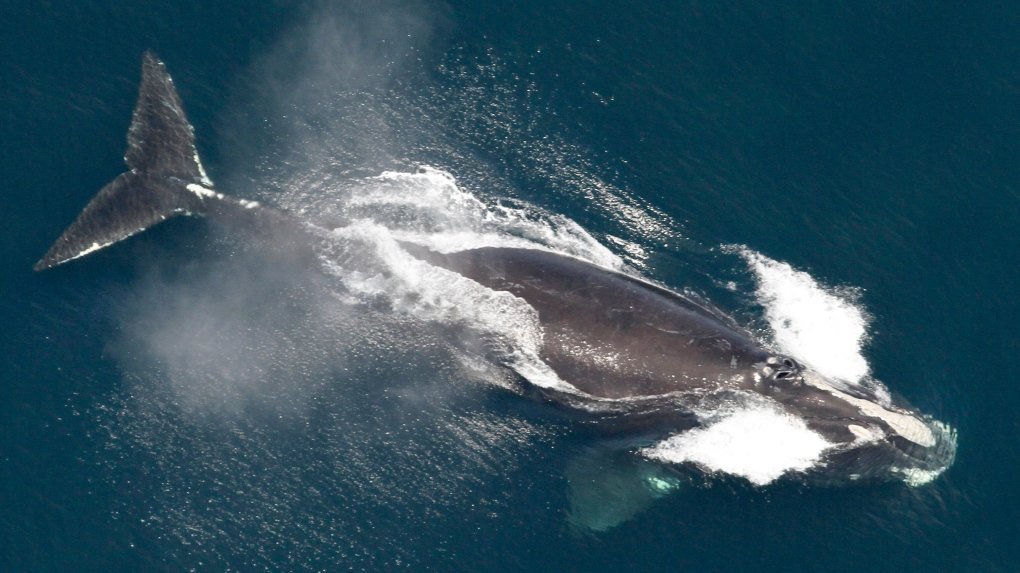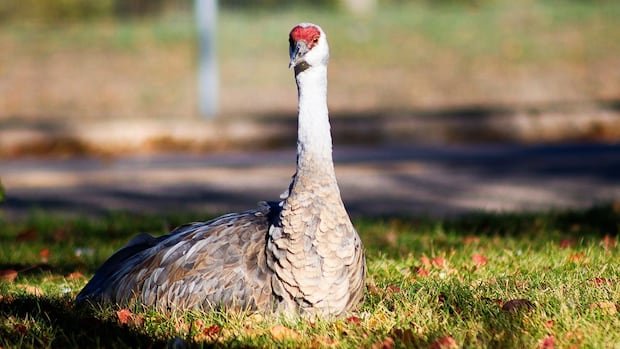FREDERICTON –
North Atlantic right whales should live to be more than 100 years old, but threats to the endangered species, including commercial crab and lobster fishing, have reduced their lifespans to a fraction of that, a new study suggests. .
Published in the journal “Science Advances,” the study focused on southern right whales, which are not endangered and can live up to 130 years. However, because southern and northern right whales are closely related, lead author Greg Breed said the study “confirms the sad situation” of whales traveling to Canada to feed.
“Unfortunately, I wasn’t surprised at all, because we’ve known that this species has been severely threatened for some time,” Breed, a biology professor at the University of Alaska, Fairbanks, said in a recent interview.
On average, North Atlantic right whales live 22 years, a shortened lifespan that the breed attributes to ship strikes, fishing gear entanglements and climate change. Historical whaling, he added, has exacerbated the problems of the North Atlantic right whale, leaving the population with almost no older whales and little inherited wisdom for the younger generation, such as how to navigate the ocean to find food as the climate changes. .
“This is a big problem. It’s a really big problem.”
North Atlantic right whales were subject to “Yankee whaling,” which ended around 1910, he said. Given the animals’ slow reproduction rate, the small number of whales that were not hunted were mostly younger. Females begin to give birth when they are between 10 and 12 years old and reproduce once every three to five years.
“They produce calves fairly infrequently…And North Atlantic right whales are just getting hit by all of these man-made threats, particularly from entanglement in fishing gear.”
The North Atlantic right whale is an endangered species and there are around 370 animals left in the wild. The main threats they face are entanglements in lobster and crab fishing gear, and collisions with commercial vessels, both of which can be fatal.
Breed said the last time a North Atlantic right whale probably reached its natural lifespan was around 1700 or 1800, when whaling was in full force but had not yet decimated the population.
“But it wasn’t long after that North Atlantic right whale populations were almost completely wiped out by whaling, and all the ancient individuals would have disappeared by that time as well,” he said. “Because to survive to be 150 years old, say in 1800 or 1850, you would have had to have survived 70 years of really intense whaling. And that would have been almost impossible.”
A long life, according to the study, allows animals to delay the age at which they begin to reproduce or have babies when conditions are favorable.
“Life history traits” of North Atlantic right whales, such as the age at which they begin giving birth, are consistent with a much longer lifespan, the study says, further evidence that the average current age of 22 is atypical and is due to high mortality. The fact that this longevity has not been recognized has “profound” implications for understanding the basic biology and conservation of whales, according to the study.
It will be difficult to correct the damage done to this species of whale due to the economic pressures of lobster and crab fishing, and changes in climate, Breed said.
Scott Kraus, a research scientist emeritus at the New England Aquarium, said Breed’s research is another way to report that the North Atlantic right whale is in serious trouble. “What it means is that conservation efforts over the last 30 years have not been successful and are not on track to prevent the right whale from going extinct,” he said.
“It’s basically a four-alarm fire.”
Animals like the North Atlantic right whale fertilize the ocean, Kraus said. Their feces nourish the ocean, creating the productivity that supports major fisheries, he added.
Conservation efforts are typically framed as a conflict between economic interests and the well-being of wildlife, he said. But the correct framing is to present the situation as a battle between short-term and long-term benefits.
To achieve the long-term economic benefits of having species like North Atlantic right whales, he said, it is necessary to regulate fishing and shipping, and take more steps to control the climate.
“We are so concerned about annual reports and corporate returns to shareholders that we don’t pay attention to the long-term consequences,” he said. “It’s the way you do the calculations.”
This report by The Canadian Press was first published Jan. 2, 2025.









